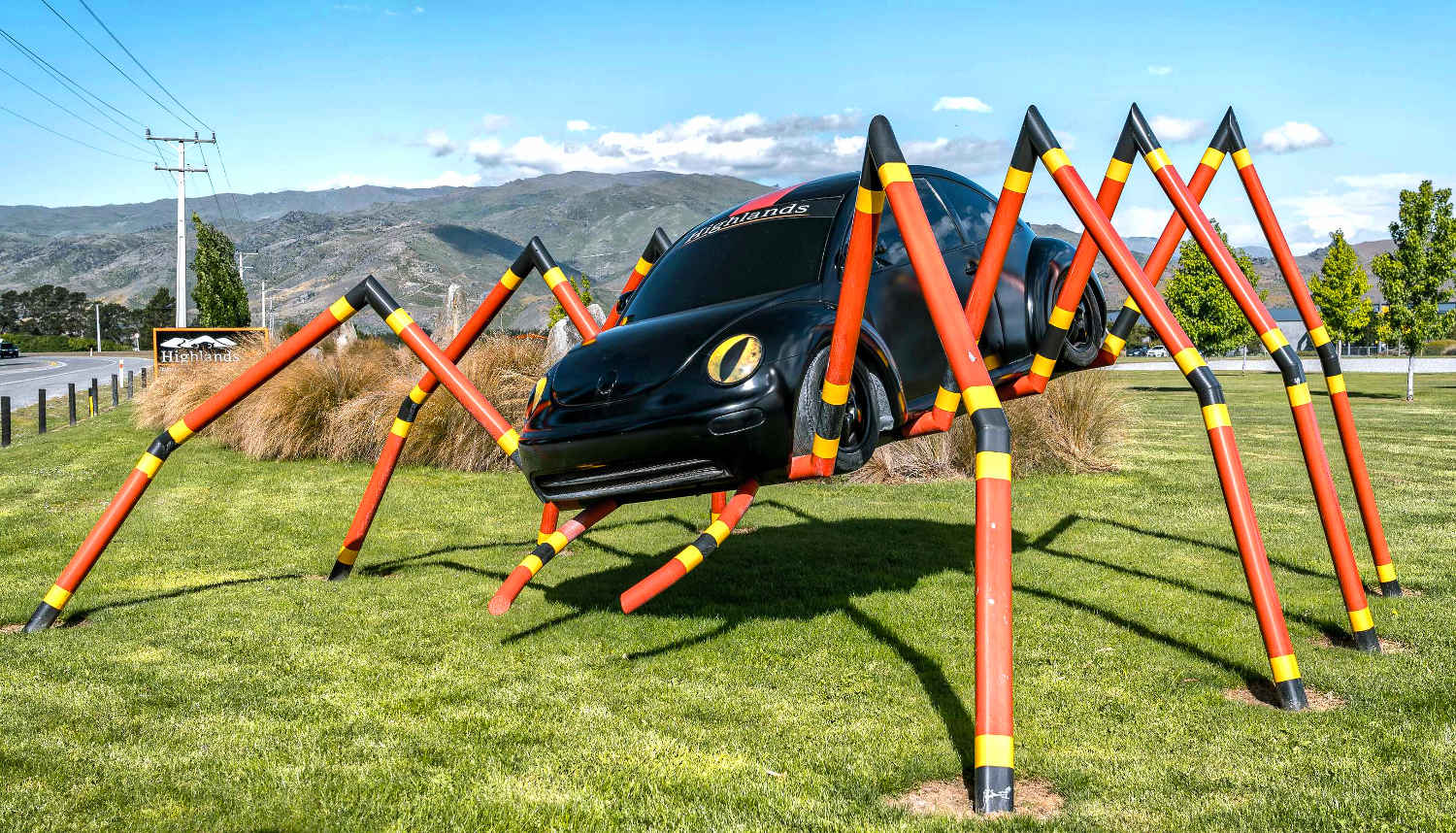Interesting flora and fauna where to go
Aotearoa is a land where the national bird forgot to fly. Wings are definitely overrated in New Zealand for several bird species. There are enormous insects and moths that have only one place in the world where they are found. And daisies you are not allowed to pick.
For more odd, unusual and fascinating places to visit in New Zealand check out New Zealand attractions, things to do… and get excited about what you will find around the next corner.

- MOTHS
MOTHS, two rare species, are found in the Chapman Road Scientific Reserve. Central Otago definitely goes in for tiny, unique life forms that are underrated visitor attractions.
Rare native moths are best seen during daylight hours in the summer. The moth’s habitat are salt pans creating a glare with the light. While you are peering at the landscape a slight form will flit in front of you.
It is oddly fascinating to be on holiday quietly observing moths.
- DAISY CHAINS
Don’t make daisy chains or even pick them. Castle Hill Scenic Reserve – the karst landscape is stunning.
Photogenic masterpieces located in the Waimakariri Basin. The karst outcrops are part of the Kura Tawhiti Reserve.
Observe the glorious butter yellow flowers, do not pick, Castle Hill buttercup is extremely rare and a lot of work has gone into protecting it. And drones are prohibited over the Kura Tāwhiti Reserve.
For details check here What is odd, weird or special about New Zealand.
- CROMWELL CHAFER BEETLE
The only place on earth where the Cromwell Chafer Beetle is found is its own nature reserve. The beetle is a poster boy / girl for conservation. A flightless beetle has its own insect conservation reserve, a 81 hectare unassuming patch of native grass on the outskirts of Cromwell. The endangered beetle has similar status as the feathered beauty, the Kākāpō.
The beetle is tiny (15mm) and lives mostly underground meaning you are effectively visiting a patch of grass. Although an inconspicuous beetle, the Cromwell Chafer is extraordinary in that this is the only place in the world the beetle has been found. At night the beetle feeds on native cushion plants, herbs and grasses.
Will visitors see any beetles? Very unlikely. Don’t let that stop you visiting a patch of grass though. Learn more about What is great about Cromwell.


If you can’t find or see the beetle take a selfie of the beetle equivalent near the town centre.

- MAHOENUI GIANT WETA
One of the world’s largest insects is only found in four places in New Zealand. The prime site is the Mahoenui Giant Wētā Scientific Reserve. In 1962 a population of giant wētā were discovered in remnant patches of tawa forest at Mahoenui in the southern King Country. More wētā were found on farmland reverting to gorse in 1987. It’s likely that the wētā were once present throughout the lowland forests of Waikato. What looks like a reserve full of gorse it is the weta’s first line of defence. While gorse is considered a pest thoughout New Zealand, in this reserve it’s an important plant as it provides protection from predators such as rats, hedgehogs and possums. Without this protection, the wētā is highly vulnerable to introduced predators.
Wild goats browsing on the gorse help to maintain its regrowth and are important in protecting the wētā. It’s the only reserve in the country where gorse and goats are protected. For DOC details check here Mahoenui giant wētā.
- BLACK BILLED RIVER GULLS
Near Lumsden the nearby Oreti and Aparima Rivers are the last bastions for breeding black billed river gulls. Yes, an endangered river gulls. If you are enjoying the Southern Scenic Route and in the vicinity check out What’s so great about Lumsden and river gulls with black bills.
- CANTERBURY KNOBBLED WEEVIL
Declared exincit in 1922 and rediscovered in 2004. Now the weevil has its own scenic reserve with golden native speargrass as its wall of defence. The Burkes Pass scenic reserve and golden speargrass is where the last H. tuberculatus population has been found. Hadramphus tuberculatus is another attraction for Burkes Pass, check out Burkes Pass trip guide, what to see & do, best activities: NZ Jane.











